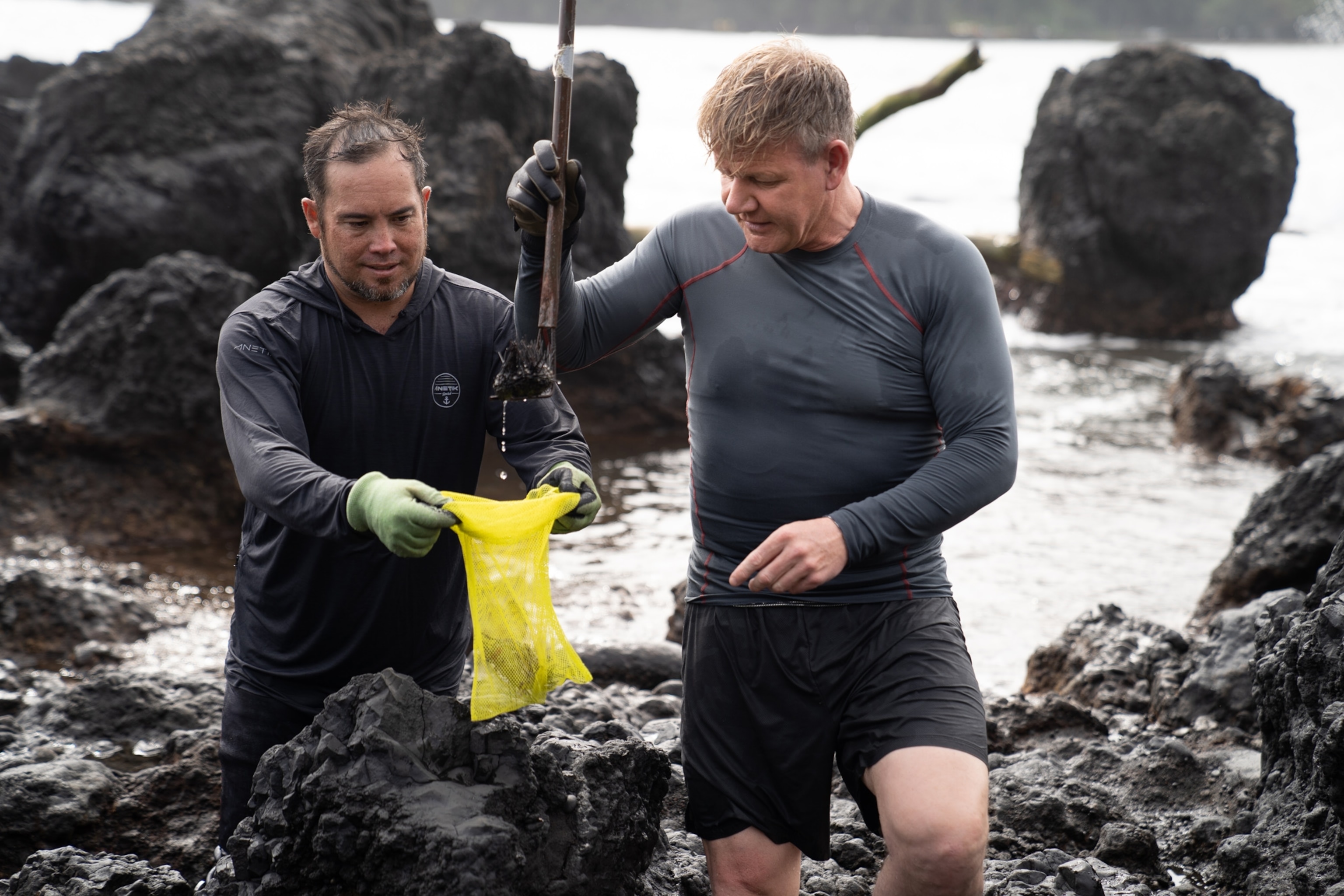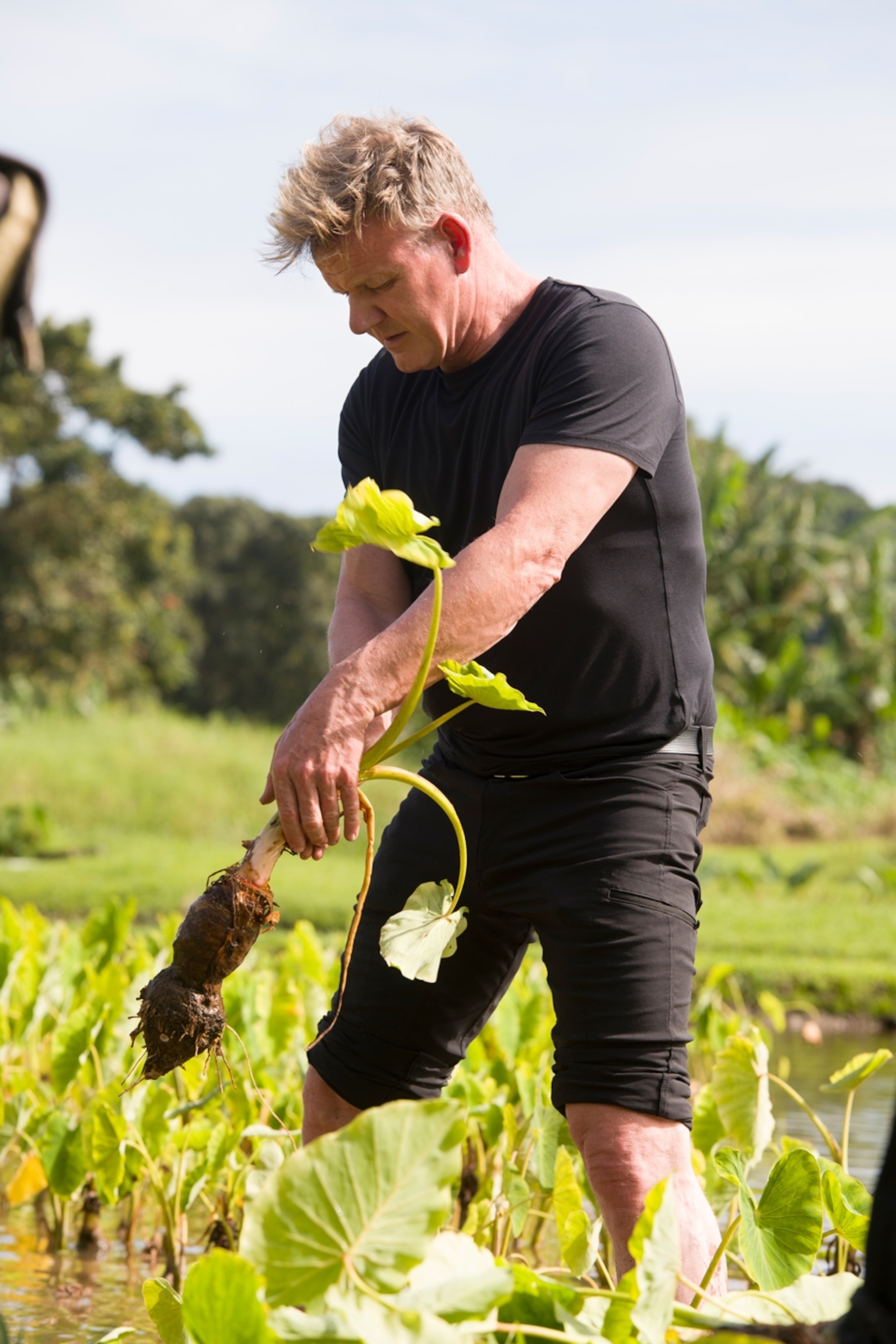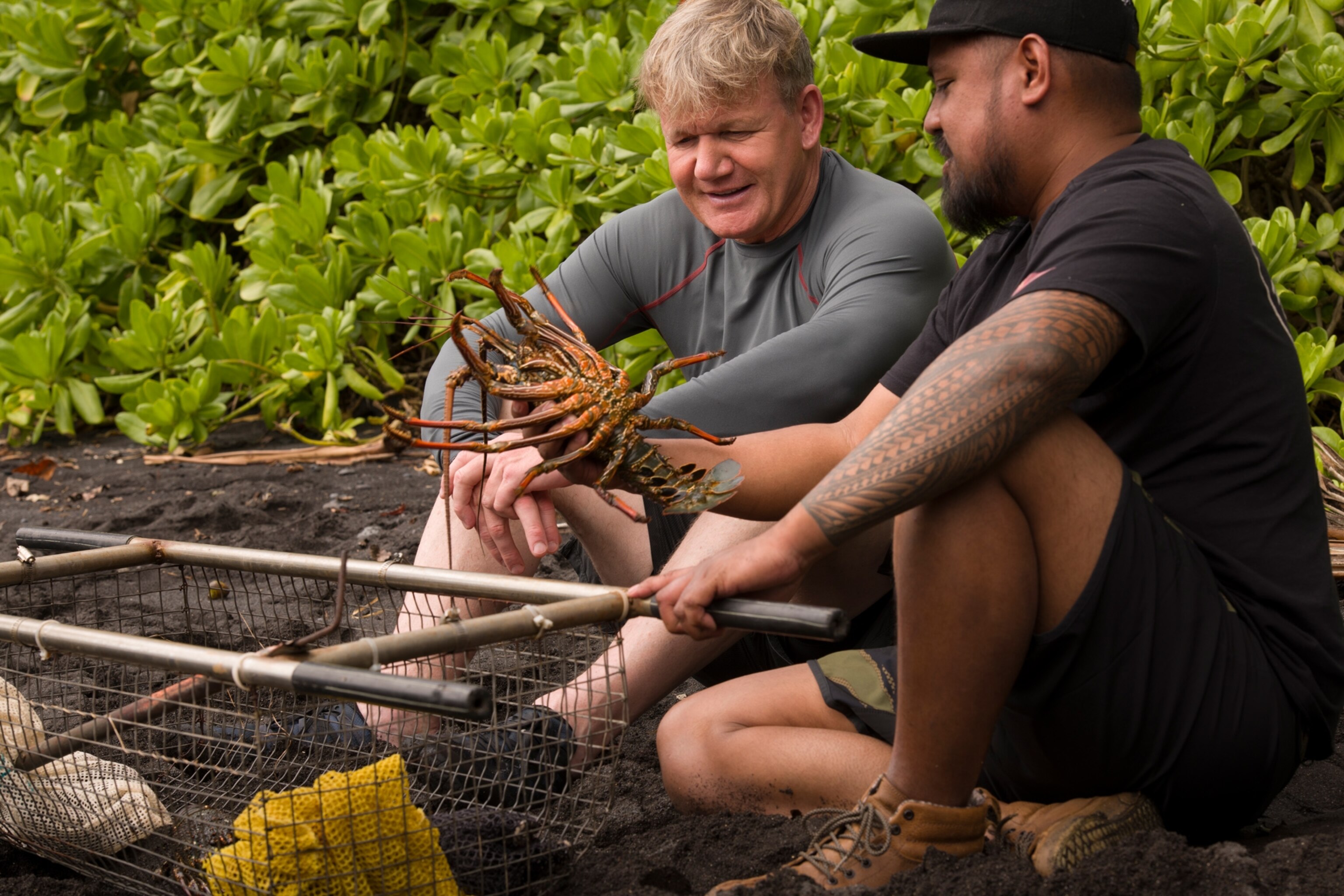Gordon Ramsay Journeys Along Hawaii’s Hana Coast
Hawaii makes a big impression with its epic array of indigenous ingredients and the fascinating effects of trade winds on its culinary traditions.
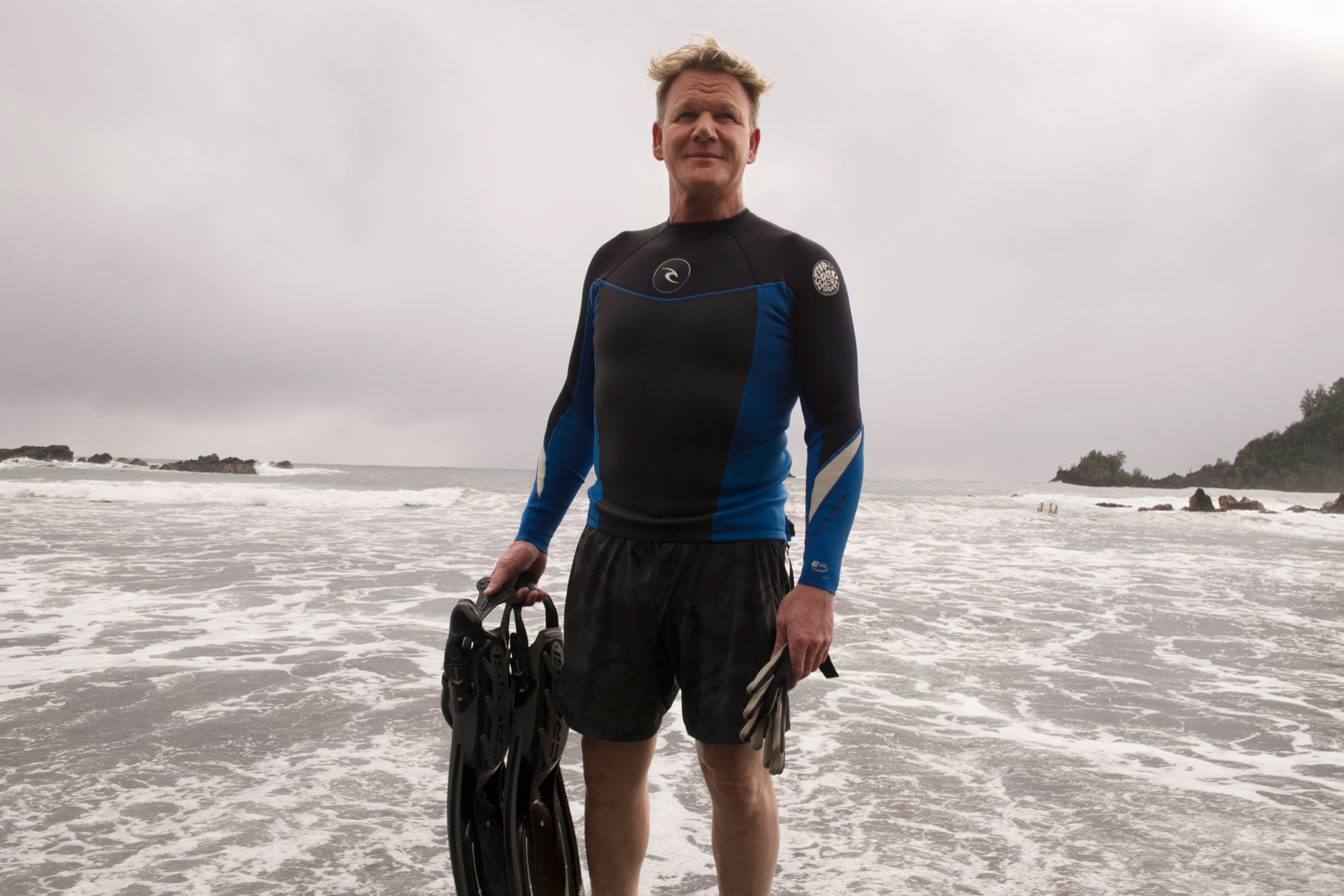
Freediving off the coast of Hana, Maui, with a spear gun in his hand, Gordon Ramsay searches for the catch of the day. “I’ve heard sharks can sense fear,” Ramsay says. “Right now, I must be lit up like a neon sign at a roadside diner.” Luckily, he’s got world-class freediver Kimi Werner along to provide some advice on successful freediving.
“Above all, it’s about relaxation,” says Werner, when Ramsay asks for tips. “If you can turn yourself into a docile stingray, this is in the bag.” Many families here forage and dive for shellfish and fish in order to put dinner on the table. It’s not only part of the heritage of the original Polynesian settlers, but also part of modern Hawaiian culture to be immersed in the wealth of natural resources.
Representing far more than Spam and poke bowls, the cuisine of the Hawaiian Islands has relied on migrants to develop the taste of the culture. The migration that brought Polynesians and later groups to the archipelago has helped diversify Hawaiian cuisine. Adding his own story is chef Sheldon Simeon, with a modern spin on classic Hawaiian dishes at his two restaurants: Lineage and Tin Roof. His menus are a representation of those groups that have come to Hawaii, like his own Filipino grandparents, and how they have forged a new taste. “The trade winds bring all these different cultures, and they just seamlessly meld together,” says Simeon. Modern Hawaiian cuisine blends flavors from the Pacific and beyond.
One of the original canoe plants that came with the early Polynesian settlers, kalo (taro) is especially important. According to the Hawaiian creation chant, the plant is a sacred connection to the ancestors, and all Hawaiians trace their roots back to the kalo. While many visitors know the plant only through the Hawaiian staple, poi, it’s only one of the many uses for kalo—from flour to greens to chips to pudding. Traditional knowledge of its preparation is important, as calcium oxalate crystals (associated with gout and kidney stones) are present in raw kalo and will dissipate when the plant is cooked.
- National Geographic Expeditions
Named for the path of life-sustaining plants carried in voyaging canoes with Polynesian voyagers, canoe plants were important for all life’s vital needs: food, medicine, fabric, containers, and cordage. Kalo is only one of those plants. Others include ‘awa (kava), kukui (candlenut), mai‘a (banana), niu (coconut), ‘uala (sweet potato), and ‘ulu (breadfruit). They’re now such an integral part of Hawaiian culture that it might be easy to overlook the importance of their origins, but their incorporation into the culture is an essential part of modern Hawaii, and what Ramsay wants to highlight on Uncharted.
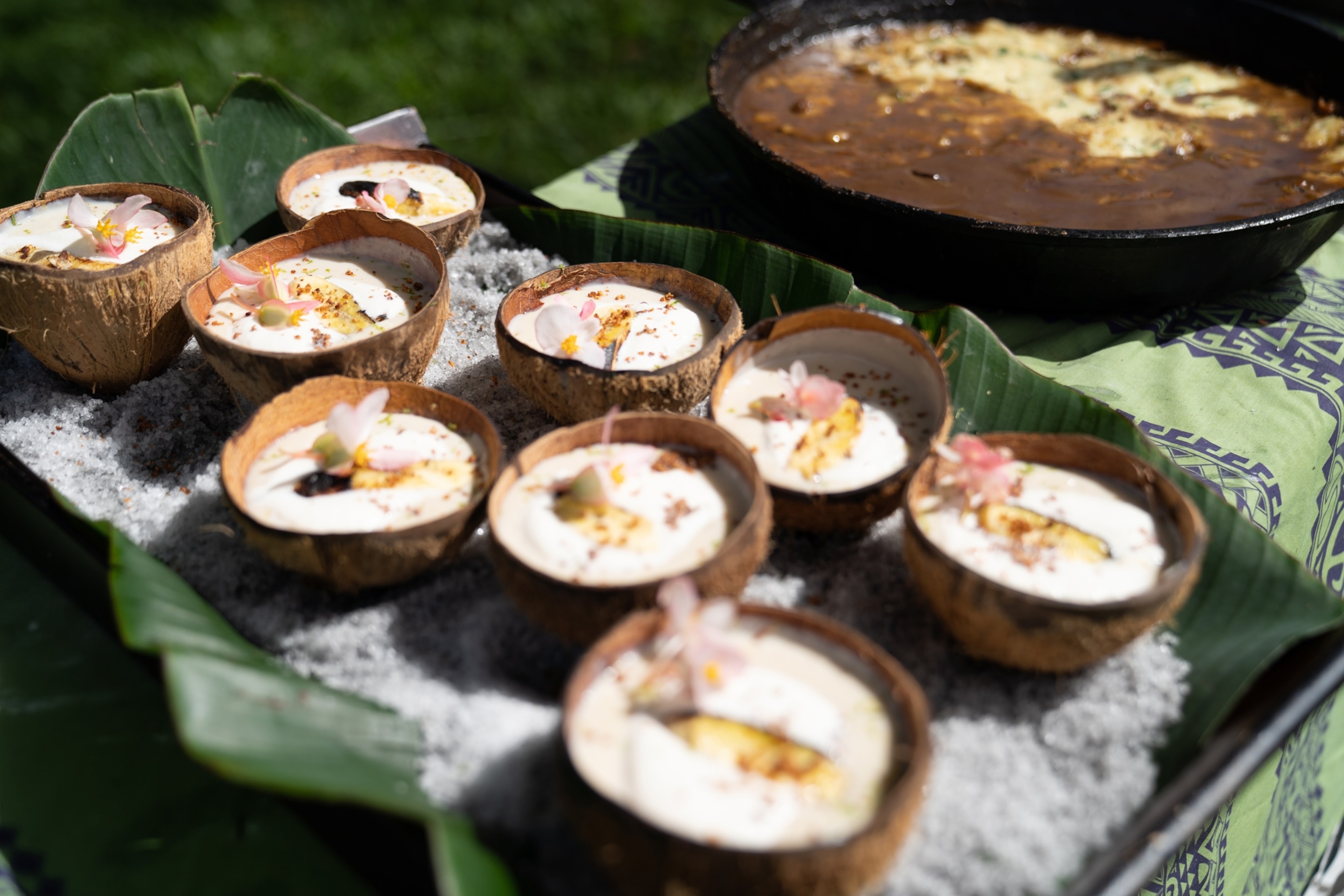
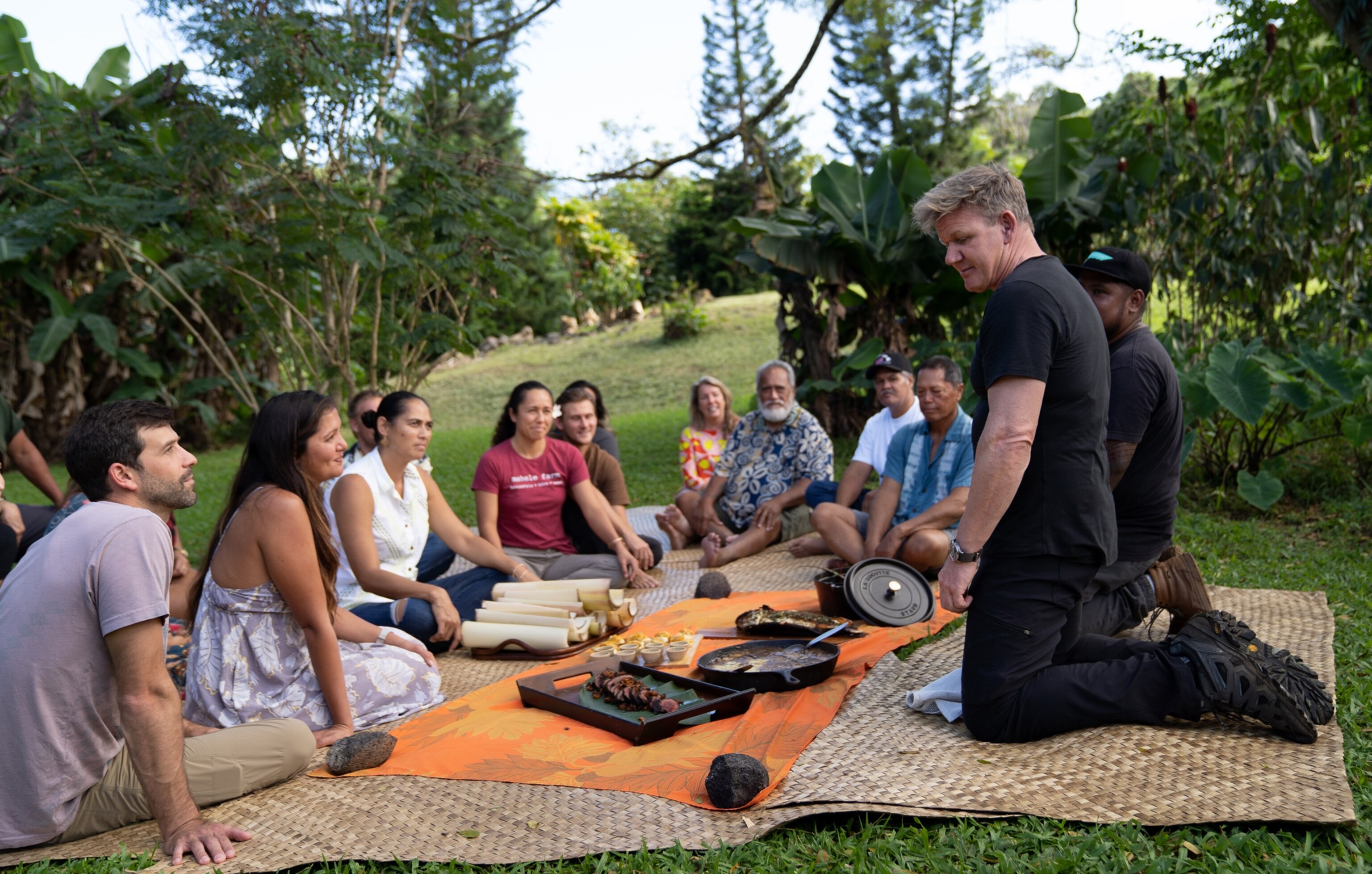
“It’s time to give back, understanding what the trade winds have done for this island,” says Ramsay, as he gets ready for Big Cook day. In proper fashion, he gives back by creating something that touches on his own background but uses local ingredients—much like what he’s discovered during his time in Hana.
